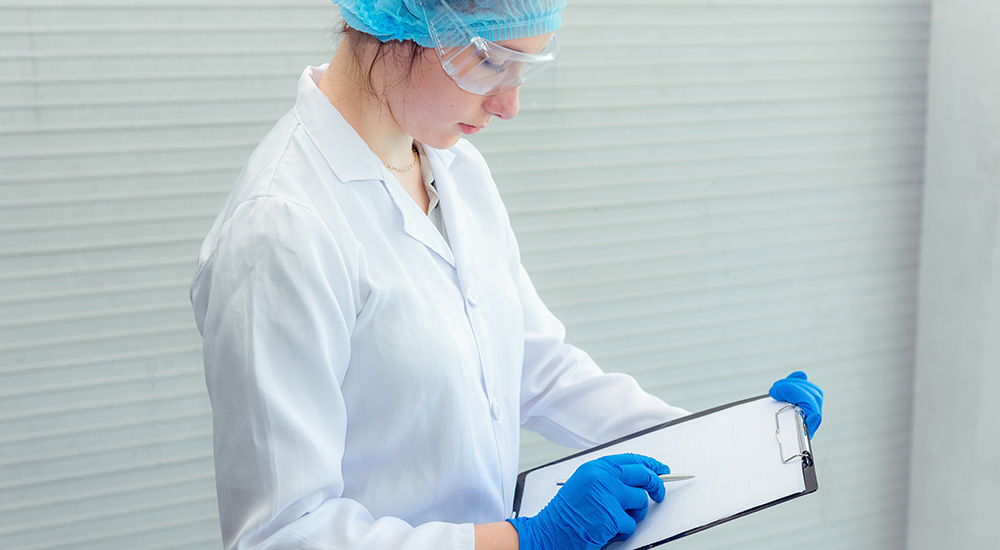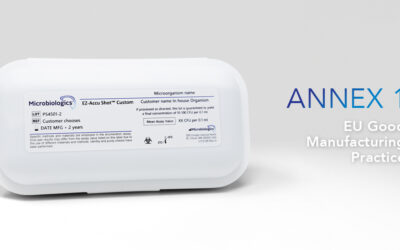Performing growth promotion testing (GPT) on new batches of media is an essential task for all sterile and non-sterile pharmaceutical manufacturing laboratories. Your laboratory performs GPT regularly, but are you certain of what best practices auditors will look for when they inspect your records?
To help you prepare for your next audit, we combed through the United States Pharmacopeia (USP) chapters related to GPT. Our overview below includes the USP chapters an auditor may reference when they visit your facility along with key points and important takeaways for your laboratory.
USP microbiology chapters to reference during an audit:
- GPT must be performed per USP General Chapters <51>, <61>, <62>, <63>, <71> <1117> and <1231>.
- GPT is harmonized with the European Pharmacopoeia (Ph. Eur.) and Japanese Pharmacopoeia (JP) in Chapters <61>, <62> and <71>.
What does the USP say about GPT?
- “Test each batch of ready-prepared medium and each batch of medium prepared either from dehydrated medium or from the ingredients described.”
- “Use standardized stable suspensions of test strains or prepare as stated below.”
- “Not more than five passages removed from the original master seed-lot.” (<61>)
- “For solid media, growth obtained must not differ by a factor greater than two from the calculated value for a standardized inoculum.” (<61>)
- “For a freshly prepared inoculum, growth of the microorganisms comparable to that previously obtained with a previously tested and approved batch of medium occurs.” (<62>)
- Solid Medium Acceptance Criteria – Average the number of colonies from the new batch of medium and the number of colonies from the previously approved batch of medium. For the new batch of medium to be approved, the following acceptance criteria must be met for each microorganism tested:
1. The average number of colonies on the new batch of the medium must be “comparable” to the average number of colonies on the previously approved batch. A quantitative definition of “comparable” is not established by the USP, Ph. Eur. or JP.
2. There must be ≤100 colonies on the control (non-selective agar). Although not required by the USP, it is recommended to inoculate selective media in parallel with non-selective media to determine the comparable percent recovery between the media. Selective media has inhibitory properties, so it is to be expected that the recovery will be much less compared to non-selective media. This can save time with investigations and root cause analysis.
- “Liquid media are suitable if clearly visible growth of the microorganisms comparable to that previously obtained with a previously tested and approved batch of medium occurs.” To determine if a new batch of liquid media is acceptable, test in parallel the new batch of media, the previously approved batch of media, and non-selective agar. The non-selective agar is necessary to determine the CFU concentration of the inoculum. The new batch of liquid media is acceptable if:
1. It is comparable in turbidity to the previously approved batch of media.
2. The number of colonies on the non-selective agar meets specifications (≤100 colonies when testing for growth-promoting properties).
- Many pharmaceutical manufacturers consider a media “batch” any time a new lot number is used. This is an incorrect assumption. A media “batch” must be defined as:
1. Any time a new shipment of ready-prepared medium is received in the facility, regardless of the lot number.
2. Any time a new batch of medium is prepared from dehydrated culture medium, regardless of the lot number and receive date.
- Many pharmaceutical manufacturers use a daily “positive control” in which they inoculate each media type used with <100 CFU. This is not a requirement per the USP.
Why is this information important?
Media is purchased one of two ways:
- Pre-poured or already reconstituted from a supplier. Manufacturers must melt the agar under controlled conditions to avoid damaging the media. Storage and shipping conditions are vital to media quality through the expiry date. Factors to be considered vary between different types of media:
– Temperature
– Container (glass, plastic)
– Humidity
– Light
Shipping conditions can damage media quality. Regardless of the lot number, the shipment itself needs to be qualified for the media to be used for the USP intended test to ensure the media was not compromised during shipping.
The manufacturing environment and end-user environment are different with variability in methods, techniques, technicians, incubators, etc. This supports the need for growth promoting media at the end user’s facility.
- Dehydrated media prepared in-house. Raw materials (dehydrated media or the components) must be stored under appropriate and controlled conditions.
– Raw materials must be used by the expiration date.
– Dehydrated media must be pre-warmed to dissolve the agar but cannot be heated excessively or it could damage heat-liable components of the agar.
– Sterilization of the media must be controlled.
Media needs to be checked for the following issues in addition to its growth promoting ability:
- Cracked containers or lids
- Unequal filling of containers
- Dehydration resulting in cracks or dimpled surfaces on solid medium
- Hemolysis
- Excessive darkening or color change
- Crystal formation from possible freezing
- Excessive number of bubbles
- Microbial contamination
- Status of redox indicators (if appropriate)
- Lot number and expiration date checked and recorded
- Sterility of the media
- Cleanliness of plates (lid should not stick to dish)
Key Takeaways
GPT is performed to ensure the media being used to detect and enumerate bacteria can support microbial growth. Media quality is one of the most essential functions of the laboratory. Make sure all laboratories are defining a “batch” of media correctly and spending the time to perform the GPT properly.
Visit our website for helpful technical documents and instructional videos including a step-by-step tutorial on how to use EZ-Accu Shot™. For more GPT advice, check out our 8 Best Practices for Growth Promotion Testing and 9 Tips for Growth Promotion Testing on Selective Media.
Read Next – 11 Pour Plate Best Practices






I have a question about this. Does this mean that for solid media your “positive control” is just your compared results of a previously tested and approved batch of media? What if two different standardized inoculums are used for the approved batch and the tested batch and their calculated average differs by a factor of 2?
Hello Maci, In this article, the daily “positive control” we reference would be a considered a daily process control. These are typically used to monitoring assay and reagent performance and is use more commonly by laboratories in the food industry. Ideally, you used the same lot of controls for your DPC as long as possible and trend the results. Results that fall out of range specific range or trend in a certain way need to be investigated. It is not ideal to compare the recovery from two lots of standardized inoculums as this introduces several variables making it difficult to evaluate media performance. We recommend to plate the batch in question with a previously approved batch in parallel with the same lot of control, or standardized inoculum, when conducting growth promotion testing. You would use the average count on the previously approved plate to calculate the factor of 2 range.